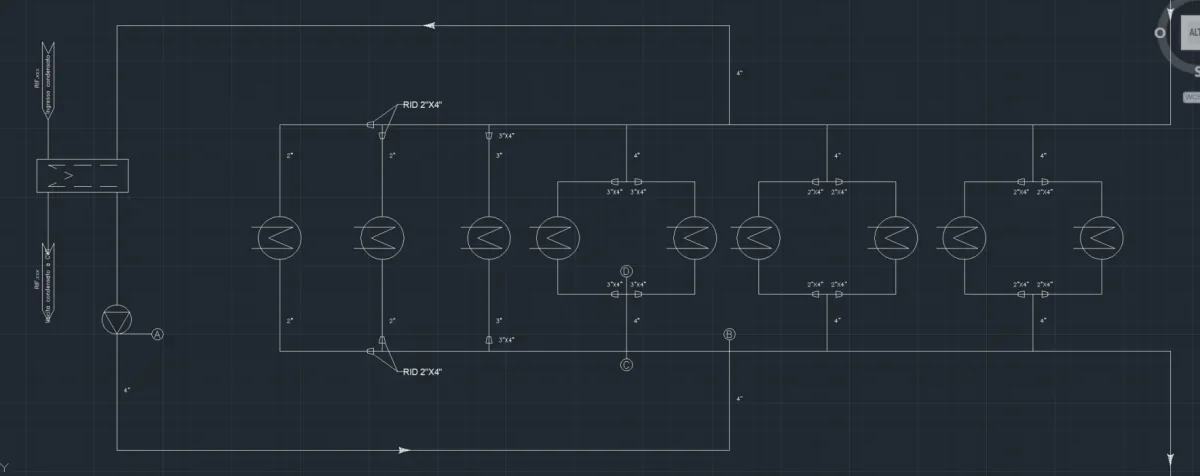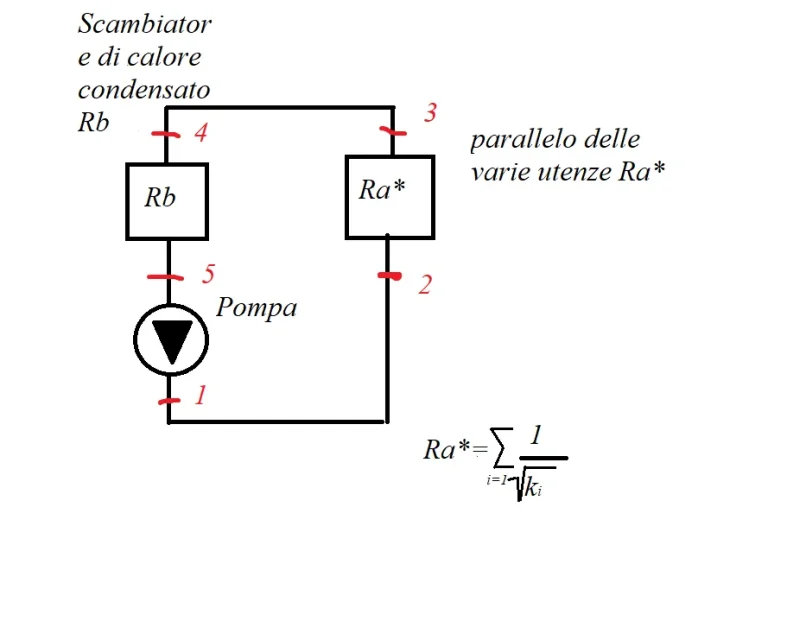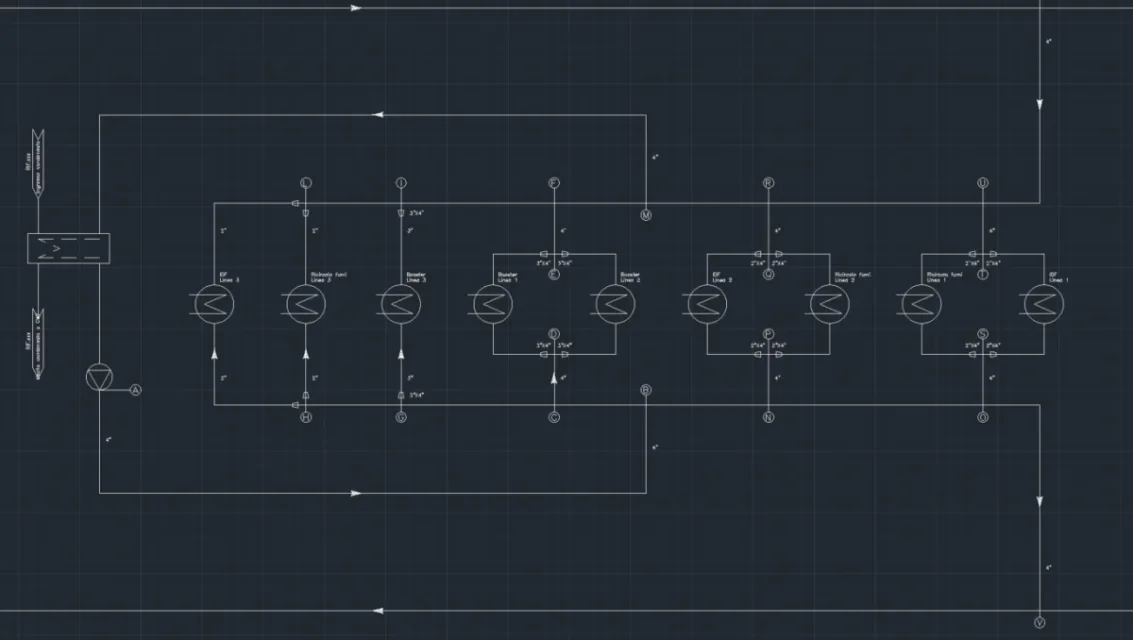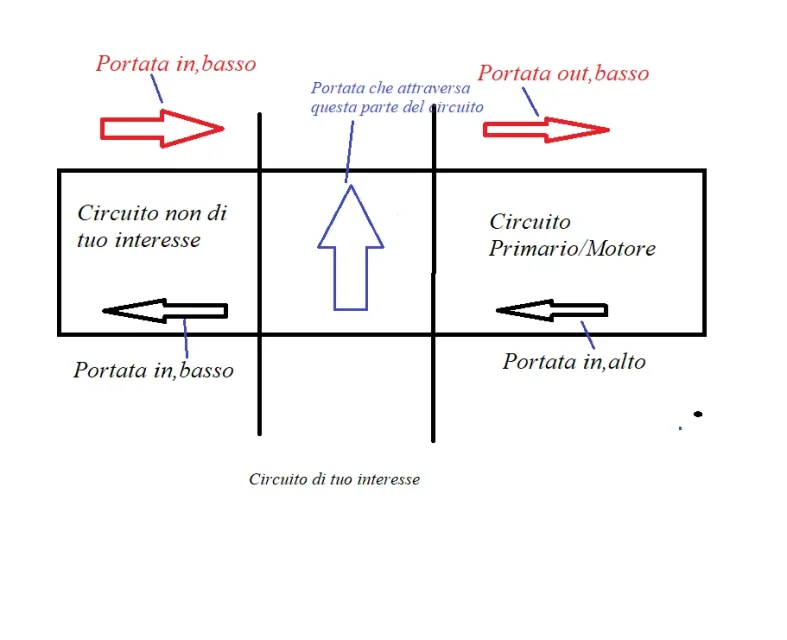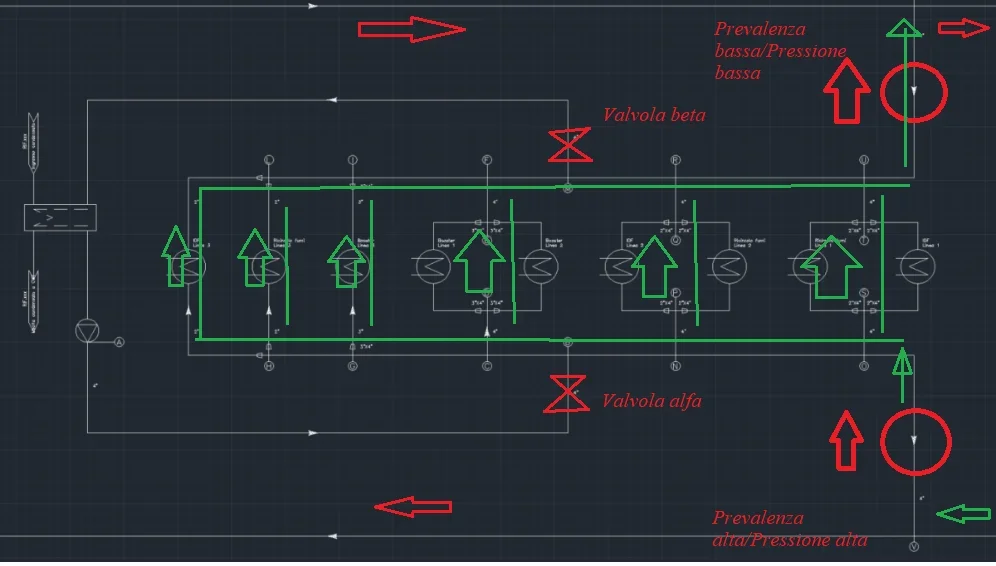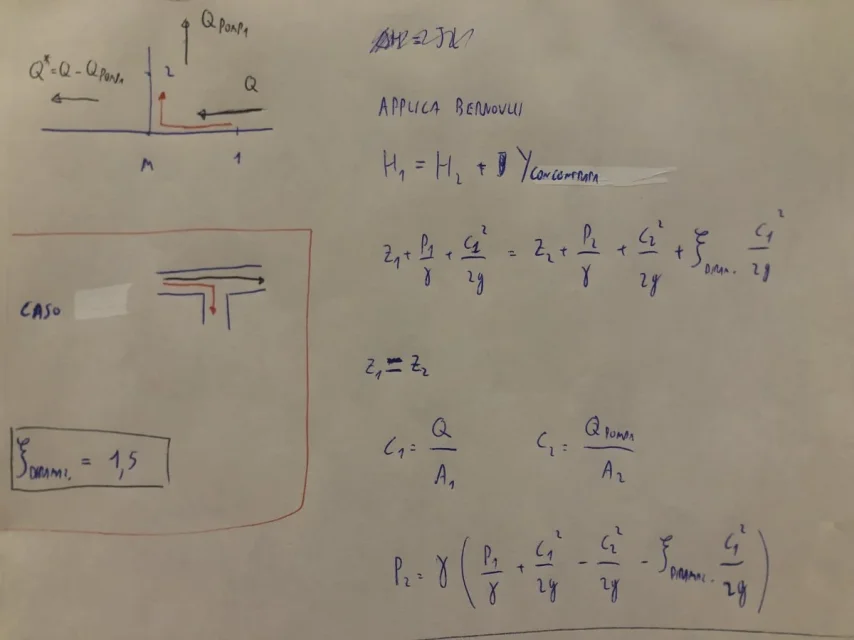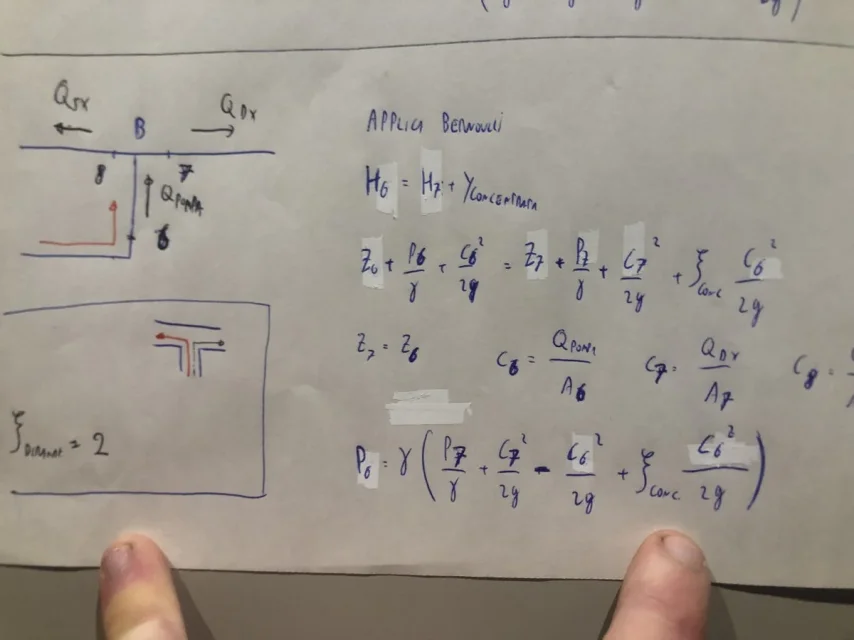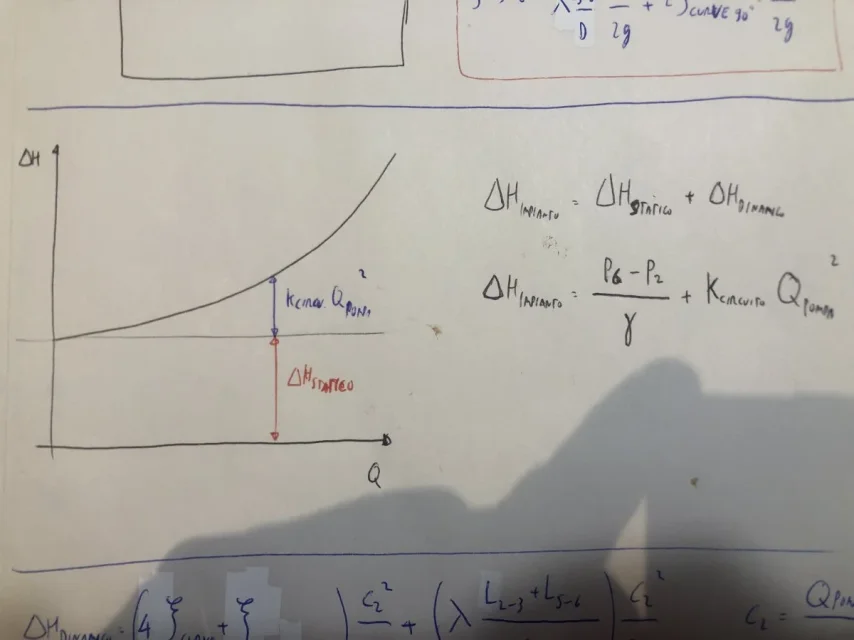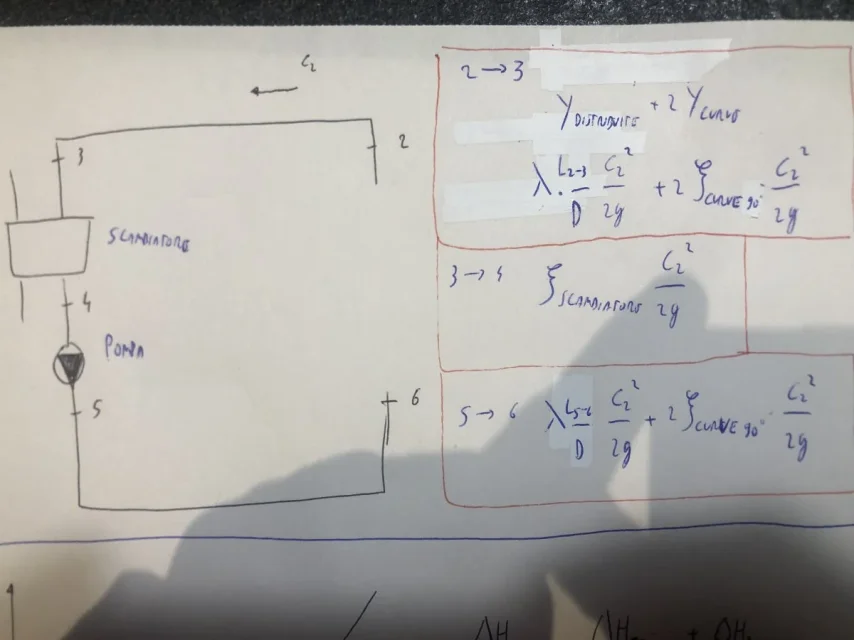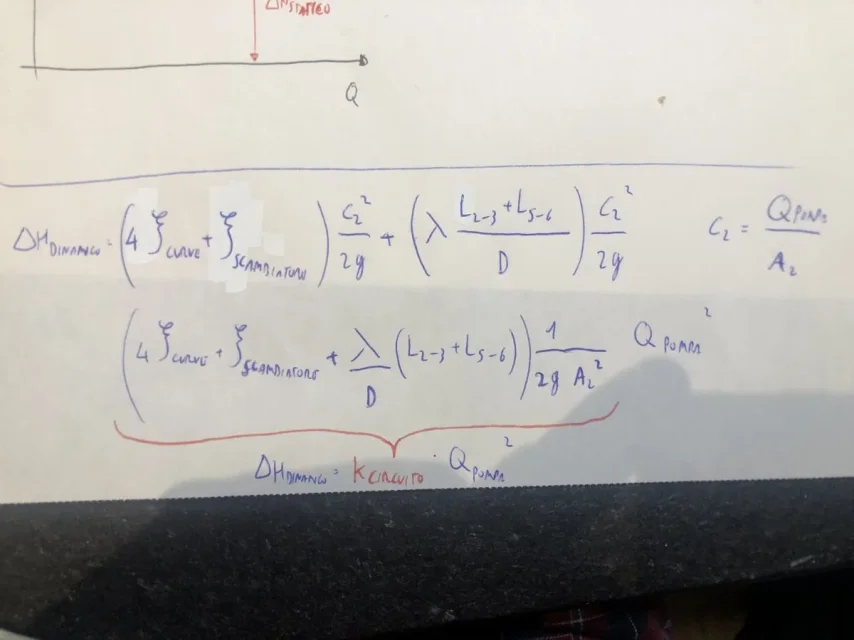Matricola99
Guest
Good morning, everyone!
I'm sorry to disturb you, but I have a doubt that I can't clarify:
I would point out that hydraulics is not my basic discipline, I would like to understand how to dimensional the pump that serves to feed these utilities in parallel in a closed circuit and how to draw the characteristic curve of the system (linked file).
as you see it is a cooling circuit that serves different utilities.
the approach I used is to calculate the load losses in each branch and in each conduit with the respective scope and sum the load losses of the branches in parallel, so to understand the ab ho conduit I calculated the pdc with total flow, in the bc le pdc conduit with the flow that passes in that conduct... how do I design the curve of the plant? ? ?
Unfortunately I cannot find any practical example. .
Thank you very much
I'm sorry to disturb you, but I have a doubt that I can't clarify:
I would point out that hydraulics is not my basic discipline, I would like to understand how to dimensional the pump that serves to feed these utilities in parallel in a closed circuit and how to draw the characteristic curve of the system (linked file).
as you see it is a cooling circuit that serves different utilities.
the approach I used is to calculate the load losses in each branch and in each conduit with the respective scope and sum the load losses of the branches in parallel, so to understand the ab ho conduit I calculated the pdc with total flow, in the bc le pdc conduit with the flow that passes in that conduct... how do I design the curve of the plant? ? ?
Unfortunately I cannot find any practical example. .
Thank you very much

